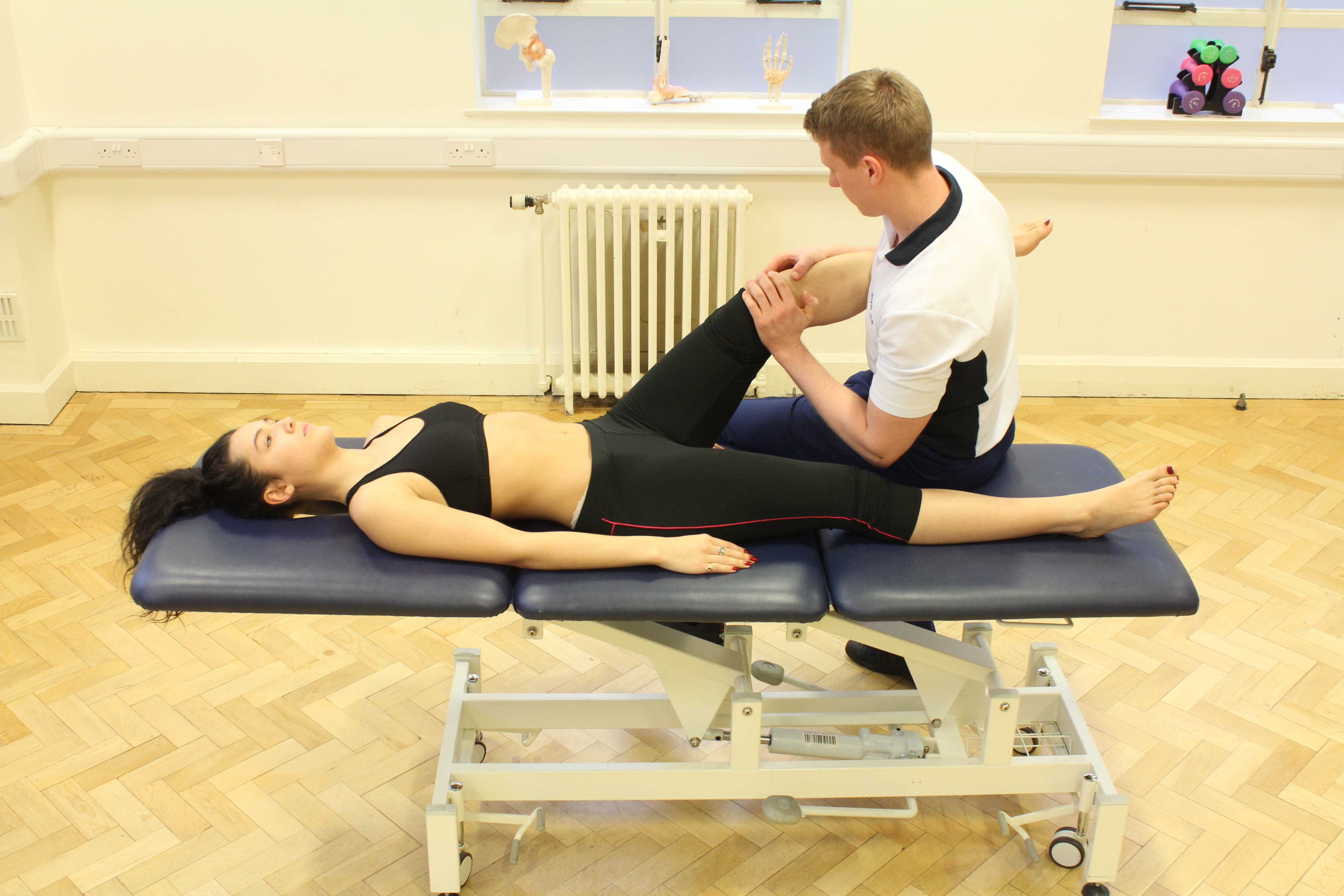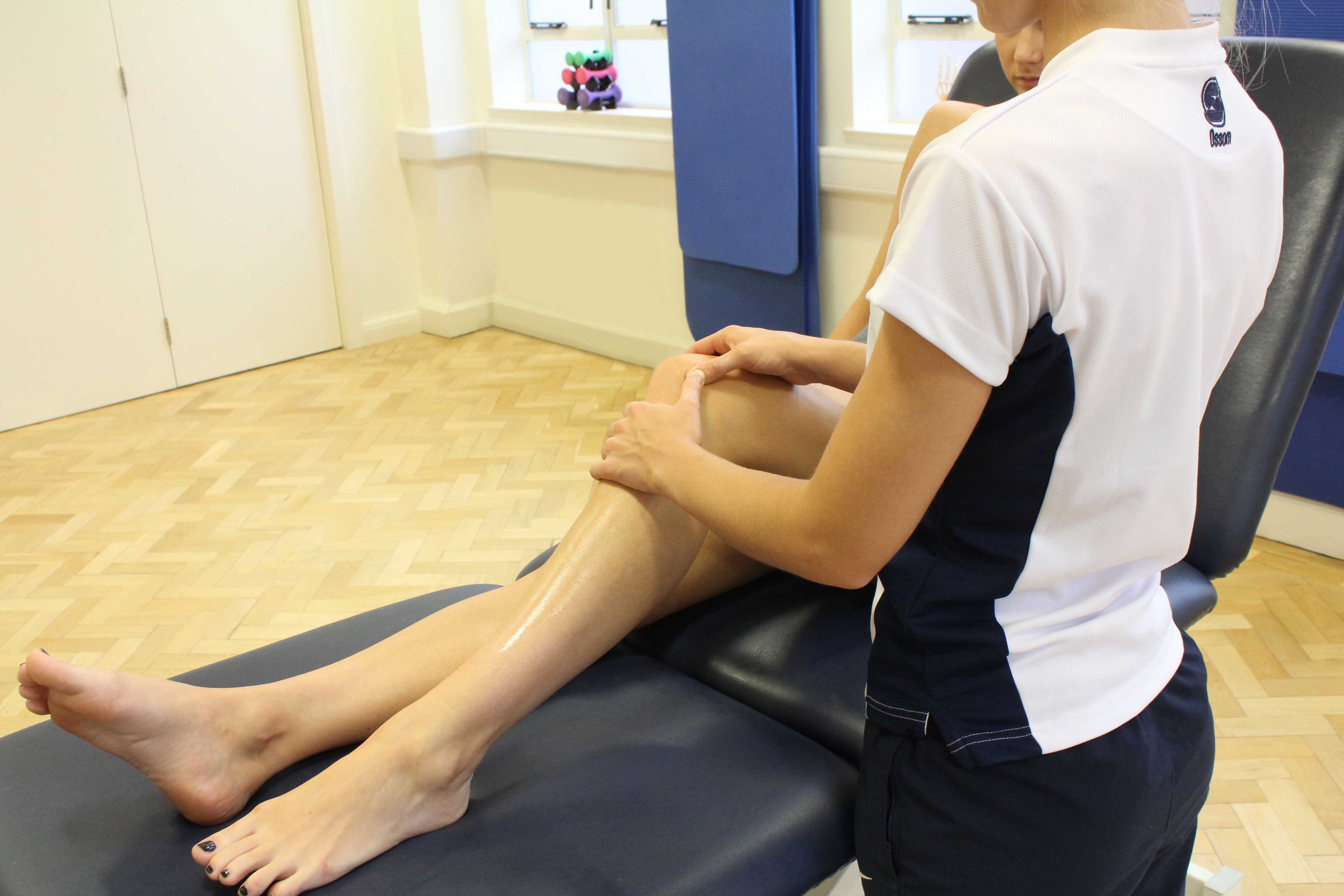What is pre-patellar bursitis?
Between the kneecap (patella) and the overlying skin there is a bursa. A bursa is a fluid-filled sac which allows body tissues to slide over one another without friction. Pre-patellar bursitis (also known as ‘housemaid’s knee’) is inflammation and swelling of this bursa. Pre-patellar bursitis can be successfully treated with a physiotherapy programme.
How does pre-patellar bursitis happen?
Pre-patellar bursitis is caused when the pre-patellar bursa is damaged or irritated. A direct blow or fall onto the knee can damage blood vessels within the pre-patellar bursa causing bleeding. The blood in the bursa causes an inflammatory response, resulting in the swelling of the bursa and subsequent bursitis. Pre-patellar bursitis can also be caused by repeated minor trauma to the bursa. This can occur with repeated kneeling. This increases wear and tear on the bursa causing micro trauma which, over time, can result in bursal thickening, inflammation and bursitis.
 Above: Therapist performing knee assessment
Above: Therapist performing knee assessmentWhat are the symptoms of pre-patellar bursitis?
Pre-patellar bursitis causes pain and swelling at the front of the kneecap. Pain is most often felt during kneeling. Other symptoms include:
What should I do if I have pre-patellar bursitis?
If you have or suspect you have pre-patellar bursitis, you should arrange a physiotherapy appointment and, in the meantime, start the RICE regime (Rest, Ice, Compression and Elevation).
What shouldn’t I do if I have pre-patellar bursitis?
In the first 48 hours after an injury to the pre-patellar bursa, you should avoid activities which increase blood flow to the knee. These include hot showers, heat rubs, massage, the consumption of alcohol and excessive activity. You should also avoid kneeling as this will irritate the pre-patellar bursa further, making the pain and swelling worse.
 Above: Therapist performing soft tissue massage on the patella and surrounding connective tissue.
Above: Therapist performing soft tissue massage on the patella and surrounding connective tissue.Physiotherapy treatment for pre-patellar bursitis.
Physiotherapy is important in the treatment of pre-patellar bursitis. If your bursitis was caused by a single injury, your physiotherapist will able to determine the extent of the damage to the bursa and rule out any damage to the surrounding structures prior to starting treatment. If your bursitis was caused by repeated minor trauma, your physiotherapist will be able to help identify the cause and how best to stimulate healing and reduce pain and swelling. In some situations, a referral may be made for draining of the swelling in the bursa, anti-inflammatory medications or the injection of a small amount of anti-inflammatory directly into the bursa to promote healing.
Your physiotherapist can use numerous treatment techniques to reduce your pain and swelling and promote the healing of the injured structures. These include: To arrange a physiotherapy assessment call Physio.co.uk on 0330 088 7800 or book online.

 0330 088 7800
0330 088 7800





































